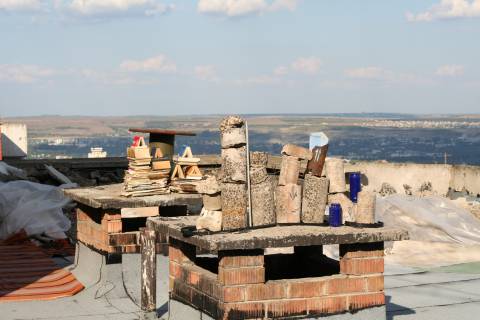Art in Bloki/ Eastern Style
Presentation of different art projects in Bloki districts in Eastern Europe
BLOKI is an international collaborative art project dealing with questions around the (in)famous blocks of flats remnant of socialist times in the Eastern European countries. The curators envision to establish a critical platform between countries, disciplines and approaches, in oder to awaken citizen responsibility and to propose new possibilities of action for the blocks of flats, changing the view of the inhabitants on their own living space, as well as the general view on Bloki´s.
The curators of the project, coming from Lithuania, Poland, Slovakia, Hungary, Slovenia, Moldova and Germany wish to act both on the international and local level. On the international level by an extensive research and by bringing together the actors, practices and experiences of their respective countries, creating a pool of common knowledge on an interdisciplinary basis, to further the understanding of working with blocks of flats, and from this new understanding they propose to act on the local level, developing new, grass-root, responsible art projects, for the tangible and long-term benefit of the local population.
The project was initiated in 2013 with support of the Goethe-Institute. The event is organized in collaboration with the Goethe-Institute in Prague and GfZK Leipzig. Seminar is organized by Lenka Kukurová.
Idea of BLOKI comes from modernist city conceptions and ideological dreams about anti-hierarchical societies. In Central and Eastern Europe this conception was adopted by socialist governments in 60s as a cure for lack of flats achieving modern standard. Built hastily, sparingly, without participation of future inhabitants – BLOKI were recognized as a symbol of authoritarianism and unrealized promise of better life quality for everybody. Nowadays we can look at the BLOKI problem from historical perspective. What failed and what was adopted from this project in contemporary architecture? What can we do with this huge buildings resource? Is it possible to define weak points of BLOKI and try to fix them? What are responses of inhabitants to the BLOKI problems? How can social and political protest, supported and encouraged by activist and artistic communities contribute to the problem solving?

